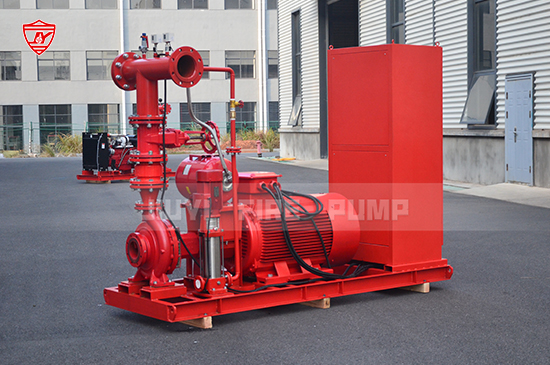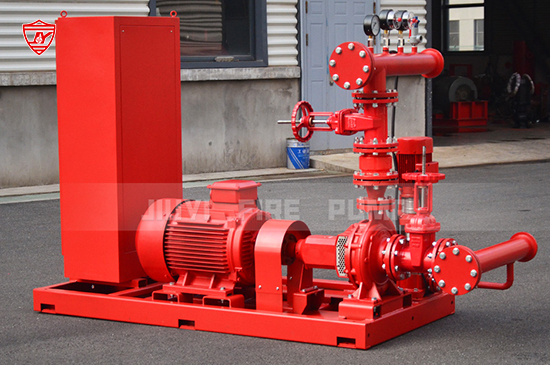When it comes to protecting lives and property, a fire pump is one of the most vital components of a building's fire protection system. But owning a fire pump isn’t enough—you must ensure it operates reliably at all times. That’s where a fire pump system audit comes in.
In this article, we’ll break down what a fire pump system audit is, why it’s necessary, what’s involved, and how it benefits facility managers, safety professionals, and building owners.

A fire pump system audit is a comprehensive inspection and performance evaluation of your fire pump and associated systems to ensure they comply with relevant codes (such as NFPA 20 and NFPA 25), perform reliably, and are ready in the event of a fire emergency.
It is typically conducted by certified fire protection specialists or manufacturers like Better Technology Group, who bring the expertise and equipment to assess whether your pump system is working as designed—or if it poses a hidden risk.
Even the most well-designed fire pump systems can degrade over time. Mechanical parts wear out, maintenance may be overlooked, or installation errors might have gone unnoticed. An audit:
Reveals hidden faults that routine inspections may miss
Improves reliability by identifying components at risk of failure
Ensures code compliance, especially with NFPA 25 and local regulations
Reduces insurance liabilities by documenting preventive action
Extends equipment lifespan through early detection of wear and inefficiency
Improves system performance, which is critical during emergencies
In many cases, audits also reveal opportunities to improve energy efficiency and reduce long-term operational costs.
Fire pump audits are essential in a wide range of settings, including:
Commercial buildings (malls, offices, warehouses)
Industrial plants and factories
Hospitals and healthcare facilities
High-rise residential complexes
Airports and transport hubs
Oil & gas, mining, and hazardous industries
Government and military installations
Any property where fire protection is mission-critical should undergo regular audits.
A professional fire pump system audit generally includes both visual inspections and performance-based testing. Here’s a breakdown of key components:
Assessing wear on impellers, casings, and seals
Verifying alignment of the motor or diesel engine
Checking for unusual vibration, noise, or overheating
Confirming correct shaft rotation direction
Inspection of control panels and circuitry
Ensuring compliance with NFPA 20 and UL/FM requirements
Verifying power supply reliability and emergency backup systems
Adequate ventilation and drainage
Room temperature monitoring (important for diesel engines)
Access and clearance for maintenance or emergency response
Conducting a flow test at 100%, 150%, and churn
Comparing actual results against manufacturer specifications
Identifying abnormal pressure drops or system leaks
Checking jockey pump operation for pressure maintenance
Inspecting system valves, gauges, and piping for integrity
Reviewing past maintenance and inspection logs
Identifying lapses or overdue services
Recommending a compliance schedule if gaps are found
According to NFPA 25 (Standard for the Inspection, Testing, and Maintenance of Water-Based Fire Protection Systems), routine inspections and testing should be conducted monthly, quarterly, or annually depending on the component.
However, a comprehensive fire pump system audit should be scheduled:
Annually for high-risk or mission-critical facilities
Every 2–3 years for standard commercial properties
After major changes such as building renovation, pump replacement, or pipework modification
Following a fire incident or system failure
Some typical issues found during audits include:
Misalignment between pump and driver
Pressure relief valve not properly set or missing
Corrosion inside piping or pump casing
Outdated or non-compliant controllers
Insufficient flow due to pipe obstruction or undersized components
Leaking seals or worn gaskets
Incomplete or incorrect maintenance records
Uncovering and correcting these issues can drastically improve fire safety readiness.
Audits should be performed by qualified professionals with experience in fire protection systems. This can include:
Licensed fire protection contractors
Certified fire pump manufacturers
Third-party testing laboratories
Internal facility maintenance teams (if properly trained)
We offer fire pump system audits tailored to your building type, industry requirements, and local compliance codes. Our team ensures full documentation and provides actionable reports for maintenance or upgrade planning.
While many facilities rely on general contractors or third-party inspectors, working directly with a fire pump manufacturer brings key advantages:
In-depth product knowledge—we understand the specific performance characteristics of every model
Access to proprietary testing equipment—more precise diagnostics
Factory-trained professionals—guaranteed technical expertise
Fast parts replacement and upgrade support
One-stop service—from audit to maintenance to repair

At the conclusion of your audit, you should receive:
A detailed inspection report
Performance test results
A list of non-compliant or high-risk issues
Clear recommendations for corrective actions
An updated maintenance schedule
Cost estimates for necessary repairs or upgrades
Many manufacturers, including us, also offer follow-up services like system retrofitting, controller upgrades, spare parts delivery, or on-site maintenance packages.
A fire pump system audit is not just a compliance task—it’s a proactive fire protection strategy. It helps you uncover risks before they turn into failures, ensuring that your facility is always ready for an emergency.
Whether you’re operating a manufacturing plant, managing a commercial complex, or responsible for public safety infrastructure, regular audits give you the confidence that your fire protection system will perform when it’s needed most.